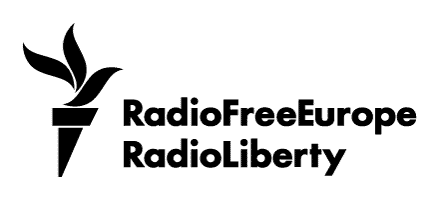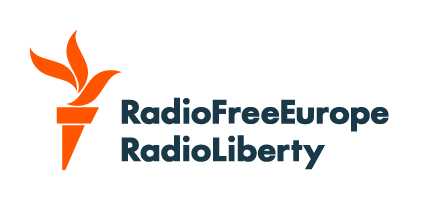The dust has settled over Fordow, Iran's remote mountain nuclear facility, and two other locations the United States says it “obliterated” over the weekend in a dramatic escalation of its efforts to hamstring Tehran’s nuclear program.
That program, to date, has yielded just over 400 kilograms of highly enriched uranium, what is considered “near” to the grade of refined uranium that can be put into a bomb.
So where is Iran’s highly enriched uranium?
“I think the safest way of describing it is that Iran knows where it is, the International Atomic Energy Agency and the public doesn't, and if the [Americans/Israelis] do, they're not telling,” said Richard Nephew, who served as the Iran director for the National Security Council under President Barack Obama.
"There is a chance somewhere in the first days of the war, they could have moved it, they could have taken some of it to another place,” said Oren Setter, a retired Israeli brigadier general and a leading expert on Iran, “but between the US and Israel and other intelligence communities, there's a good chance it would have been discovered.”
The Iranians "probably thought it was safe in the tunnels,” he said.
In the wake of the June 22 bombing run -- and the nine days of Israeli strikes that preceded it -- intelligence analysts, international inspectors, and nuclear experts have scrambled to figure out how badly Iran’s nuclear ambitions have been damaged.
US President Donald Trump repeated his earlier insistence that the US bombs inflicted massive damage on the Fordow in particular.
"The site is obliterated, and we think everything nuclear is down there, they didn't take it out,” he said on June 25. “We hit Iran so hard and so fast they didn't have time to move their enriched material. It's very hard to move, it's very heavy. We believe it's buried under granite, concrete, and steel.”
So far, that’s not clear.
Breakout Time
In the wider discussion about how decisive the US strike was, the question of where the uranium is is key.
Iran, which insists its program is peaceful or civilian in nature, is estimated to have about 8,400 kilograms of enriched uranium in all, as of May. The vast majority of it has been enriched to low levels, suitable for power plants. That’s allowed under international law.
But according to the International Atomic Energy Agency, known as the IAEA, the country also has 408 kilograms of highly enriched uranium – refined to around 60 percent.
Most of that is believed to have been stored at the Isfahan Nuclear Technology and Research Center, located 450 kilometers south of Tehran. Isfahan was hit by Tomahawk cruise missiles fired by a US submarine. B-2 Stealth bombers, meanwhile, circled the globe to drop so-called “bunker buster” bombs at Natanz and Fordow, a sprawling enrichment facility buried deep in a mountain.
A preliminary assessment of the damage, by the US Defense Intelligence Agency, said an unknown amount of the highly enriched uranium, or HEU, was moved out of Fordow prior to the bombing. It could have been moved to a third site that the Iranians have reportedly told IAEA about ahead of time, the Pentagon agency found.
Defense Secretary Pete Hegseth tried to emphasize that assessment by the DIA was merely preliminary and inconclusive. CIA Director John Ratcliffe said the agency’s own assessment contradicts the DIA findings, and that Iran’s nuclear program “has been severely damaged.”
Iran has said little about the issue.
IAEA director Rafael Grossi said the agency received a letter on June 13 from Iran's top diplomat saying Tehran will "adopt special measures to protect our nuclear equipment and materials." No details of the measures were given.
Outside experts are circumspect.
“With residual stocks of 60 percent and hidden centrifuges, Iran retains an ability to break out and produce weapon-grade uranium,” the Institute for Science and International Security, a Washington think tank founded by former IAEA weapons inspector David Albright, said on June 24.
Weapons-grade uranium is classified as uranium enriched to 90 percent or more.
Centrifugal Forces
Centrifuges – thousands of them -- are essential to processing uranium, spinning a gasified version of the element at super-fast speeds and enriching it for use in fuel rods, for nuclear power plants – or for building a warhead.
Iran had about 20,000 centrifuges installed at the country’s two main enrichment sites: Fordow and Natanz. Fordow was the primary location for producing HEU, according to the IAEA.
US and Israeli officials suggest that much of Iran’s centrifuge capacity has been severely damaged, something that outside experts largely concur with.
The “attacks have effectively destroyed Iran’s centrifuge enrichment program,” the institute said. “It will be a long time before Iran comes anywhere near the capability it had before the attack.”
Installed in massive chambers, bolted to floors, and precisely tuned to spin at tremendously fast speeds, centrifuges are hard to move around.
Uranium, however, is easier to move around.
In the run-up to the June 22 attack, satellite imagery showed dozens of trucks lined up on the access roads leading to the tunnels into the Fordow mountain complex. Some experts said the trucks may have been bringing dirt to fill in the tunnel entrances, to protect against air strikes or even commando raids.
“Before the tunnels were filled, it is possible that the Iranians tried to move the enriched uranium kept at the site,” the Institute said.
But most of the HEU was probably stored at Isfahan, which has been hit by US and Israeli strikes. according to Jeffery Lewis, an arms control researcher at the James Martin Center for Nonproliferation Studies in Monterey, California. Isfahan’s tunnels were not hit by American or Israeli strikes, he said.
“No one knows where the HEU is now,” Lewis said in a post to X.
“Four hundred kilograms of HEU is a big deal, I don’t want to undersell the problems,” Decker Eveleth, a nuclear and deterrence expert at the Center for Naval Analyses, in suburban Washington. “It’s a major problem. It’s going to be really hard for the Iranians to figure out what to do, and do it in a way to evade detection.”
Two unnamed Israeli officials claimed that Iran’s HEU stockpile, and less-refined 20 percent, was buried at Isfahan and Fordow and would be difficult to recover, Axios, a Washington-based online news site.
“No one will know for sure for days” whether the HEU was moved, US Secretary of State Marco Rubio told CBS News. “I doubt they moved it, because you really can’t move anything right now. The minute a truck starts driving somewhere, the Israelis have seen it, and they’ve targeted it and taken it out.”
Backup Forces
Iran is believed to have an unknown number of spare or backup centrifuges stored away some place.
Aside from the question of where the HEU is, the other question is how many there are, and how quickly they could be operational if Tehran wanted to take the final step to weaponize its HEU.
"The HEU is critically important, because...they’ve done 99 percent of the work to get to highly enriched, that's the 450 kilograms,” Setter said. “That's critically important.
“But they're still missing that 1 percent of enrichment work [to reach weapons-grade],” he said. "And for that to work, they need working centrifuges. The question is how many they still have, how quickly they can operate them, and if they dare to do it.”














